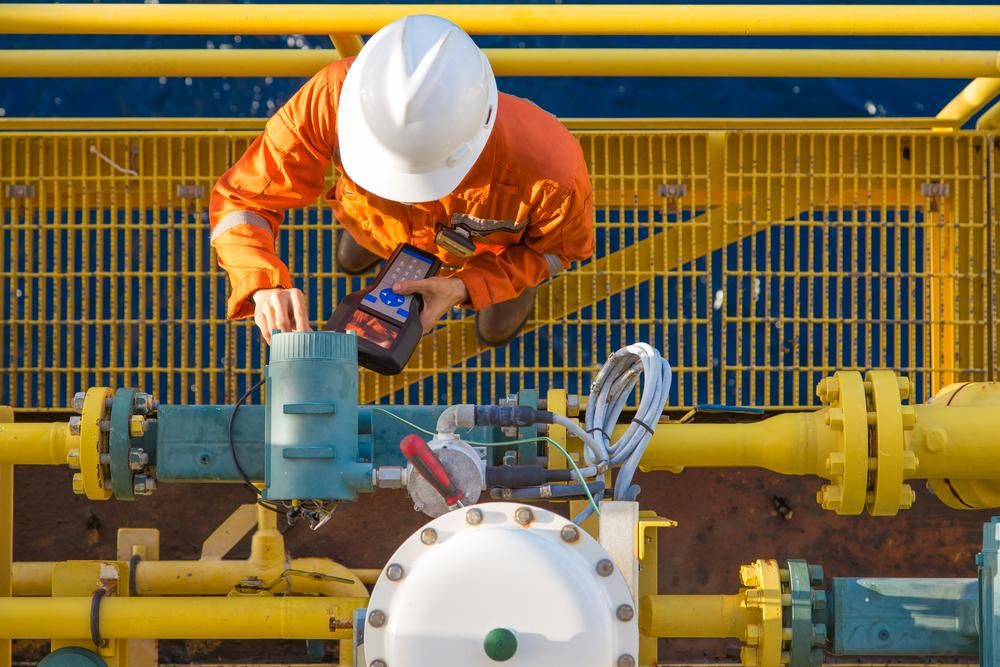New and Emerging Trends in Lone Worker Protection
As innovative workplace strategies allow fewer employees to handle greater responsibilities, employers have a responsibility to protect their workers...
From AI security cameras to biometric access controls, these IoT devices can help prevent warehouse theft and safeguard employees.
The Internet of Things (IoT) has made it possible for warehouses to implement an array of new security technologies. As the global economy continues to grow on the back of a surging transportation industry, warehouses are becoming increasingly tempting targets for criminals. In response, warehouses are investing more heavily in state-of-the-art security solutions to protect valuable cargo and safeguard employees. Recent warehouse shootings in Illinois and Maryland serve as a reminder that strong security measures are needed to protect human lives.
Choosing the right security solutions for your warehouse is important, but it’s not always clear which technologies are going to deliver the ROI to make it worth it. If you’re considering upgrading your warehouse security systems, the following five IoT solutions are a good place to start.
Radio-frequency identification (RFID) is an electronic tracking system that uses small microchips to monitor the locations of vehicles and cargo alike. RFID chips transmit identification and location information using radio waves, which can be captured by RFID readers and recorded in a central database.
RFID is like barcoding, only with much more data — and RFID tags can be read even if they’re hidden or out of sight. RFID readers can instantly identify large numbers of diverse items in close proximity (i.e. on a pallet), greatly reducing the time needed for inventory counting. For warehouses, RFID offers a cheaper and faster way to both identify and track items during storage, movement, and shipping. It allows for greater overall awareness of inventory and can help prevent both warehouse theft as well as costly out-of-stock situations.
RFID has been used in some form since World War II. Now major players like Walmart require their shipping partners to use RFID tracking. Although overhauling warehouse systems for RFID can save significant amounts of time and labor, you’ll have to do a cost-benefit analysis to understand if the price tag is worth it for your operation.
Basic closed-circuit television (CCTV) has long been a convenient way for security guards to watch many areas at once from a central control room. But new artificial intelligence (AI) capabilities are rapidly changing the game, as enterprise-level AI surveillance cameras can now offer sophisticated ongoing visibility into what’s happening in your warehouse — even in the absence of continuous human oversight.
In practice, machine learning is a fairly new capability, and only over the past few years have AI-enabled cameras become viable as commercial products. Now intelligent warehouse security systems can recognize faces, track moving targets, and alert warehouse employees to potential threats in real time. Security personnel can use a search function to immediately pull up relevant results — for instance, the system could identify all “white vehicles” within hours of footage.
The enhanced transparency of these systems represents an exciting value-add for warehouses looking for robust security solutions capable of tackling new threats. It should be noted that these systems are relatively new, and may not yet offer a full range of capabilities. Nonetheless, this technology is developing quickly, and warehouse security professionals should keep a close eye on how the market progresses.
With heavy machinery, large packages, and huge spaces that must be directly monitored at all times, warehouses are ideal settings for lone worker or duress alarm systems. Today’s technologies offer impressive capabilities like multi-channel notifications and location mapping. Most are straightforward to operate, allowing for immediate emergency calls. Lone worker systems are appropriate for individual employees, while duress alarms can help any employee alert headquarters in the event of an emergency or active shooter situation.
Of course, there are some challenges to implementing a successful lone worker solution. If the warehouse space has connectivity issues or if the system relies on cellular connectivity, the risk of failure may be unacceptably high. Typically, dedicated alarm systems are the most cost-effective and secure way to ensure employee safety.
Emerging access control technologies like biometrics systems can offer major security advantages for warehouses with access checkpoints, especially when paired with smart cards. These biometric systems scan unique physical characteristics like faces, retinas, or fingerprints to identify and control access to warehouse facilities. Biometric identifiers are intrinsically linked to the individual, and can’t be lost, stolen, or duplicated. The use of biometric access control systems is widespread in airports and border checkpoints, and it’s quickly becoming more popular in the private sector, as well — the global biometrics market is expected to reach $41.8 billion by the year 2023.
Biometric measures can streamline facility access, enhance inventory control, and prevent unauthorized use of machinery. These systems are typically easy to use, as there is no need to remember passwords or PINs, and permissions can be adjusted from a central control system whenever needed. These systems can also improve timekeeping and make it easier for employers to track the movements of their employees.
For a warehouse that hopes to implement the latest in IoT security devices, the right network needs to be in place to ensure those solutions are secure from the ground up. Many existing warehouse networks are not necessarily designed to interface with IoT devices, and some will need to be upgraded before these cutting-edge warehouse security solutions are implemented.
Unsurprisingly, the top priority will need to be (cyber)security — IoT devices like AI cameras can be hacked, and can even serve as gateways through which cybercriminals can access entire networks. Digital security is becoming just as crucial as physical security, and an unsecured network can lead to data breaches capable of incurring financial losses even greater than those of cargo theft.
IoT devices raise practical network concerns, as well. These devices need a fair amount of bandwidth to work correctly, and typically require connectivity throughout a warehouse. A network assessment can help you understand your current capacity, and see what sections of your warehouse lack adequate wired or wireless access. In addition, these systems require substantial data storage — surveillance footage, along with RFID and biometric databases, can take up a great deal of space.
If you’re looking to take advantage of state-of-the-art warehouse security solutions, it’s time to talk to the experts at Turn-key Technologies (TTI). With over three decades of experience assessing and upgrading warehouse networks and deploying safety and security solutions designed to protect warehouse employees and cargo, TTI can ensure that your warehouse is prepared to capitalize on the next generation of connected warehouse security tools.
Talk to us today to discuss your options!

As innovative workplace strategies allow fewer employees to handle greater responsibilities, employers have a responsibility to protect their workers...

Lone workers are at a greater risk than those who are continually around others. These workers can become ill, injured, or worse, and might be...

Professionals in a wide variety of fields often find themselves alone in hazardous work conditions. Are you doing all that you can to keep your lone...